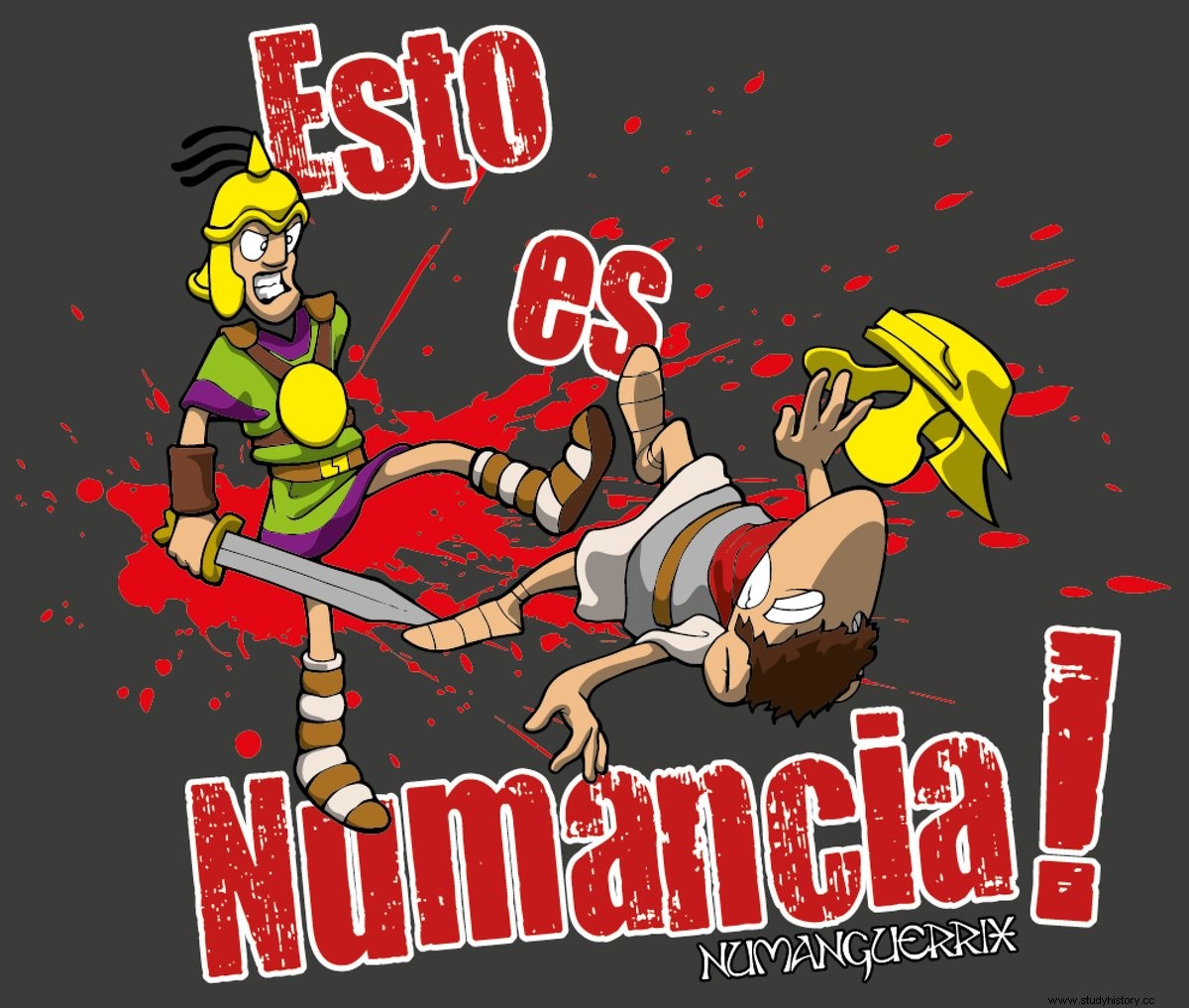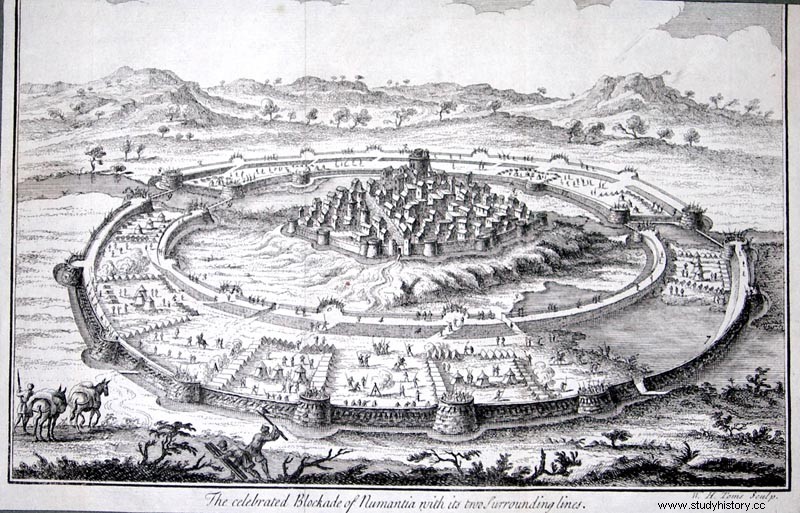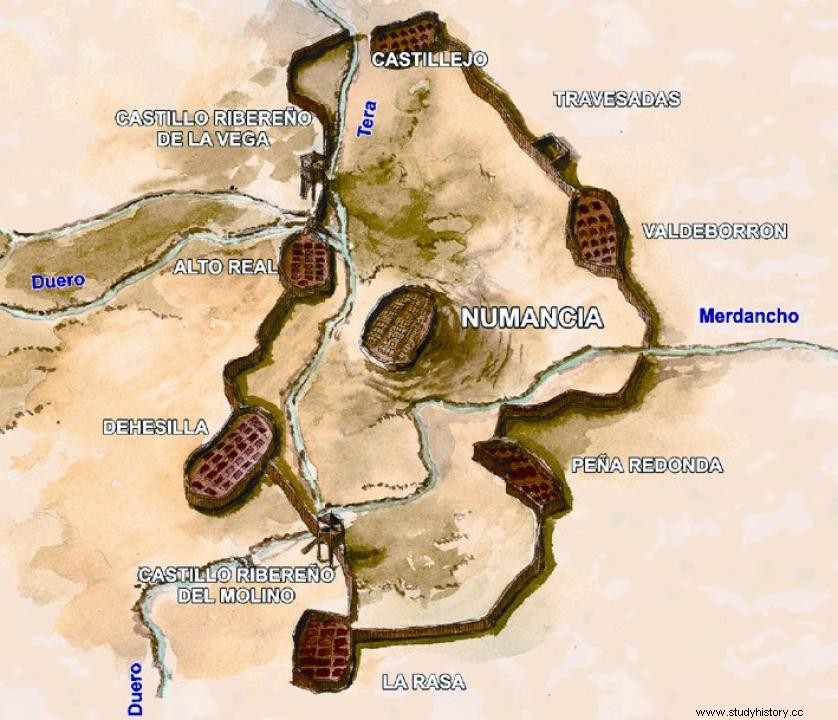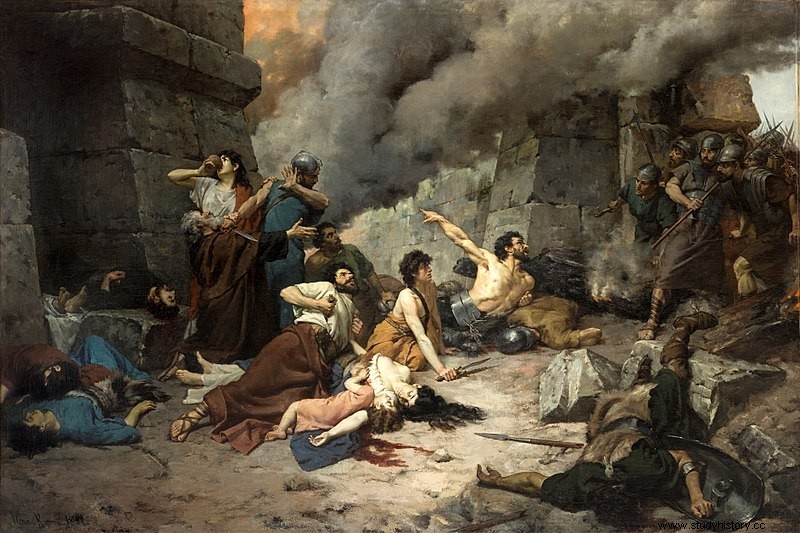If we search the RAE for the adjective numantino , the third of its meanings says «that tenaciously resists to the limit, often in precarious conditions «. Today, while we are looking for the origin of this meaning, we will pay tribute to the two thousand five hundred Numantinos who, all together like the later Fuenteovejuna , did not give their arm to twist before the Roman invader.
Just mentioning Numancia, that small and stubborn city, caused rashes in the Forum of Rome. The sons of great men, instead of enlisting to gain fame and prestige in their cursus honorum , tried to avoid their military commitments in order not to end up enrolled in the next army that would leave for the indomitable Hispanic border. For almost twenty years, the Celtiberian and Arevaca tribes remained in clear hostility against Rome, defying it and causing the consuls Metellus, Quintus Pompey and Pompilio Lenas defeats and humiliations, although none like the one suffered by Hostilio Mancinus . In 137 BC the consul ordered, like everyone else, to besiege the city, but faced with the impossibility of taking it and the news of the arrival of troops from other Celtiberian towns and Cantabrian tribes, they lifted the siege and withdrew. Numantinos, grown, came out after them and defeated them. Fed up with fighting and blood, they offered Hostilio Mancinus a peace treaty. The consul, logically, accepted and saved his life. As the treaty had to be ratified by the Senate, Hostilius left for Rome. The senators were outraged by this humiliating treaty and forced the consul to appear naked before the gates of Numancia and remain so for a day. There, poor Hostilio appeared naked at the gates of Numancia in full view of all the defenders of the city. The Numantines left him alone, he had enough.

Illustration of Numanguerrix
That accumulation of disasters lasted until the Senate got fed up with that stagnant situation and decided to entrust the most prestigious military man of the moment, the brand new conqueror of Carthage, to tackle the Hispanic problem definitively. In 134 BC, Publius Cornelius Scipio Emilianus , adoptive grandson of Scipio the African that Santiago Posteguillo has recreated for us so well, took charge of the matter. Once ratified in his position, and modified the calendar to be able to undertake the project within the year that it lasted, he equipped 4,000 volunteers with his own money, forming his "cohort of friends" with the most similar of them . The Senate denied him funds for such a risky project, but Scipio, with contempt as Plutarch left us, told them that "his and his friends' was enough." When he arrived at Numantia he did not immediately go into combat with the obstinate Numantines. He had a lot of work to do with his own men, whose discipline was conspicuous by his absence after years and years of lack of leadership. Beginning by expelling from the camp the concubines, harlots, fortune tellers, pedlars and other parasites of the army who lived with the legionnaires, he applied marches and maneuvers severely, restoring the legions to their army status. One of the tribunes stationed in Hispania showed such dedication to recovering the morale of the troops that Scipio decorated him. His name was Gaius Mario. While in those troubles, his Numidian ally, King Jugurtha, arrived with 15,000 men and 20 elephants. Still, he knew it wasn't enough.

I have always maintained that the lethal weapon of the Roman army was not the pilum , but the shovel, as well as the fact that his best generals were true artists in the design of fortifications and sieges, as Scipio demonstrated in Numancia and Caesar would replicate a century later in Alesia. Scipio, already counting on nearly 60,000 men against the 2,500 insurgents, decided not to try his luck in an assault with uncertain results and to tightly surround Numancia and reduce it by hunger and thirst. To do this, he used a high fence, moats, a dam on the Duero and seven fortified camps around the hill on which the city stood, many of them discovered by the German Hispanist Adolf Schulten during his archaeological campaigns carried out between 1905 and 1914. .

During the long siege of Numancia is when a young Arevaco, called Retógenes appears in history. As Appian left us, hunger was already pressing and, perhaps by order of the Council, a small group of five warriors led by such Retogenes circumvented the Roman siege using some ingenious ladders and searched among the neighboring cities for support to be able to keep their swords in check. tall. Appian speaks of them fleeing on horseback, but I doubt that five horsemen would have jumped the Roman stockade, let alone that they had not been eaten after many months of encirclement based on a juicy diet of acorn bread and boiled leather.
The Councils of Termes (Montejo de Tiermes) and Uxama (Burgo de Osma) gave him gourds and only the warrior youth of Lutia (perhaps Luzaga) welcomed them as heroes and promised them help. One of the most common errors inherited from the education of other times, and that survives in some television absurdities set in ours, is to think of a united Iberia against the Roman invader. This idealized image of the indigenous confederate before the foreign power is completely false. No city supported the neighbor per se, since each ethnic group or city of old Iberia looked after its own interests, with or against Rome. This macabre example serves as proof of this:the very Council of the Elders of Lutia, fearful of reprisals from the inflexible Scipio as soon as the insurrection of the young people became known, decided to anticipate the events and warn the Romans of the intentions of their impetuous warriors. Scipio's reaction was implacable. The Roman troops entered Lutia by surprise, before the levy mobilized, capturing the young Numantines and their new Lutiako allies. The punishment was as explicit as it was ignominious:400 young warriors lost their right hands that day, disabling them from raising their sword against Rome... and being able to die in honorable combat. It is not known if Rhetogenes was one of those 400 mutilated, but it is very likely that he was. Nothing else was heard of him.

Numancia (1881) – Alejo Vera
Numantia fell in 133 BC. After the unsuccessful and last embassy of the counselor Avaros , in which Scipio did not accept any favored treatment in case of agreeing to surrender, its indomitable inhabitants preferred the effect of yew (poison), fire or iron before ending up eating each other or kneeling in chains in front of that arrogant Roman legate. Only a few paraded in the triumph of Scipio Emiliano through the streets of Rome, since then also called Numantino, and the rest were sold as slaves. After the fall of Numancia, all of Celtiberia remained in peace until, seventy years later, a one-eyed and idealistic knight set fire to Hispania in his rebellion against the tyranny of Sulla:we are talking about Quintus Sertorius.
On this subject, I recommend the comic «The destiny of Numancia. Aius» from my friends from Numanguerrix.

